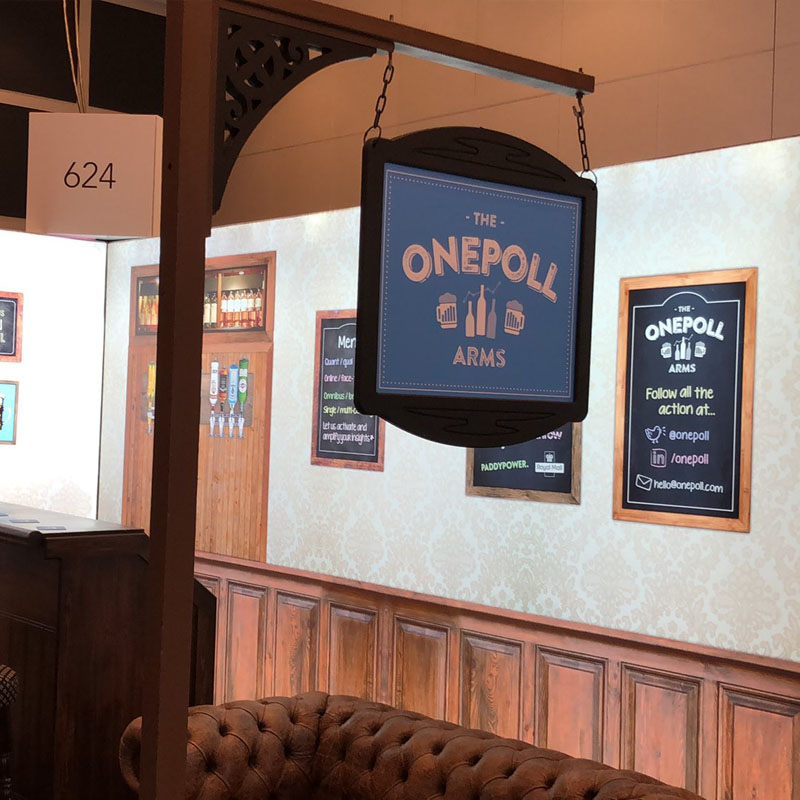 Reading Time: 3 minutes
Reading Time: 3 minutesAfter a successful London debut in 2019, Quirk’s headed back across the pond this month for their second UK event. It’s well known that ‘seconds’ are notoriously difficult – bands with triumphantly successful first albums often struggle with ‘bad second album syndrome’ and second time novelists with best-selling works of fiction struggle to put pen to paper for their second book. Was London 2020 going to be the Quirk’s UK team’s difficult second conference?
In terms of pure numbers, the answer is no. According to the follow up email from Dan Quirk, this year the event hosted a total of 1,348 attendees (up from 1250 in 2019) and 40% of those registered were clients. The average number of hours spent at the conference across the two days was almost 12 and the Klik badges recorded over 20,000 connections made between attendees. I personally find the Klik badges incredibly helpful for networking – they make connecting with people quick and simple and remove the risk of losing important contacts because of misplaced business cards.
Although Quirk’s is primarily a trade show rather than a conference, there was some good content on stage. While Quirk’s 2019 London event had a successful content partnership with global research association ESOMAR, this year’s event had an expanded collection of collaborations, with ESOMAR, AURA, the Qualitative Research Consultants Association and Insight Management Academy all curating sessions. These partnerships are a great way for Quirk’s to promote excellence across the industry and showcase great quality case studies for attendees.
Here are some of the stand-out presentations from the event:
- Beyond NPS: Driving a business forward with practical tangible insights, Synectics and Rainmakers CSI (AURA curated session)
We all know of globally giant organisations which use insights to inform decision making on a daily basis. But, how can small or medium sized businesses without an entire team dedicated to data and research, use insights? In this presentation, Rainmakers CSI and Synectics, a UK based, AIM listed company working in advanced security and surveillance equipment, explained their five tips for helping small and medium sized businesses work effectively with their insights agencies. This presentation was significant because it emphasised that regardless of company size or audience, practical, tangible insights can and should be accessible and actionable for all businesses, not just giants, in order to drive positive change.
- Live Lens: Getting closer to consumers, Sky (ESOMAR curated session)
This ESOMAR Young Researcher of the year award winning presentation was interesting because it shows how researchers can use the evolution of social communication to connect with consumers for research. Sky used their Live Lens methodology to hear real-time reactions to TV shows such as ‘Chernobyl’ and ‘Riviera’ from viewers watching in their own homes, using their own smartphones. Participants gave reactions to moments on screen using text, GIFs or emojis as they would within their own WhatsApp conversations, providing the insights team with a depth of understanding that went beyond viewing figure data. This is significant because the insights team at Sky can use the conversations to locate the exact moments in a programme which engage audiences. They can then use these findings to directly inform social media messaging and communications around the show.
- Love Island: The cultural zeitgeist, ITV
Being a recovering Love Island addict myself, I was not surprised by the big crowd that gathered to see this presentation. The ITV audiences team showed how, by integrating multiple methodologies, they determine Love Island’s footprint. They predict the cultural trends that feed into the shows’ success, the types of content that keep viewers engaged (the challenges audiences enjoy the most) and also the brands that Love Island should partner with. I’ve always been curious about the ROI that brands who sponsor programmes such as Love Island see from their massive investments, so it was interesting to see that the ITV team could prove that brands had indeed seen significant influxes of web visitors and searches amongst Love Island viewers as a result of their promotions.
Away from the content, there was also a busy exhibition area, with decent exhibitors from a range of suppliers. My personal favourite was the OnePoll pub, providing a perfect dive into British social life for anyone new to the UK, or respite for tired conference-goers in need of a pint. And a shout out to E-Tabs whose interactive games are always a success.
Quirk’s showed that despite last year’s success they’re committed to improving and evolving the conference year by year. Like the brands and insights teams Quirk’s cater for, they are committed to learning and understanding the experience they provide, in order to meet our needs better. By building on feedback from last year Quirk’s has created a great start to the 2020 MRX events calendar. I’m looking forward to seeing how the event evolves next year.